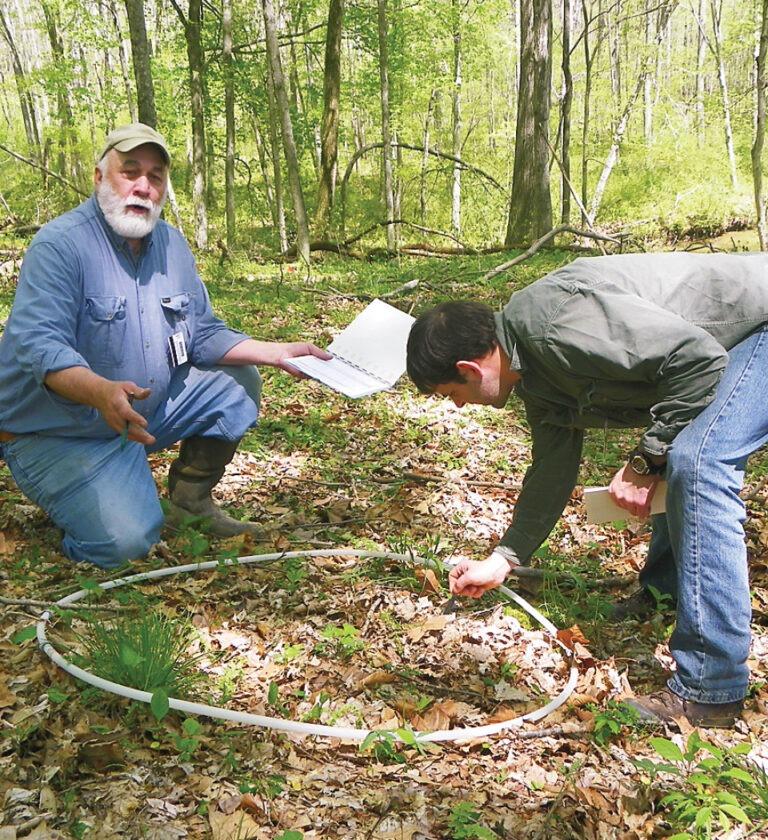When the U.S. Department of Energy’s (DOE) former Portsmouth Gaseous Diffusion Plant in Pike County, Ohio, went into shutdown mode in the early 2000s, it had a marked impact on the economy of the surrounding region, as it had employed thousands of regional residents over many decades. The site, which was used to enrich uranium during the Cold War era, has been undergoing cleanup and decommissioning for the past 10 years. Now parcels of the site are becoming available for redevelopment.
“The U.S. DOE recognized when the Cold War was coming to an end that they wouldn’t be using these big facilities to enrich uranium,” says Kevin Shoemaker, referring to the former Portsmouth diffusion plant, known as PORTS. Shoemaker is program manager and legal counsel for the Southern Ohio Diversification Initiative (SODI), the lead entity working with many community partners on the redevelopment.
By 2010, a coalition led by DOE, SODI and Ohio University joined the work in a big way, by conducting broad-based public engagement on the future of the site, a process known as PORTSfuture. Led by Stephanie Howe, BS ’87, MPA ’97, the University led a study to determine local residents’ future-use preferences for the site—and learned that reindustrialization was overwhelmingly the desired goal. That view helped coalesce the vision for the site to be transformed into an integrated clean energy production and sustainable manufacturing complex that has been dubbed the Ohio Valley Green Energy and Manufacturing Initiative, or GEM. Joining GEM as the inaugural venture is a $1.5 billion-plus private sector project by Newpoint Gas, LLC, which has been proposed to launch the redevelopment.
DOE’s Joel Bradburne, who oversees the site, says Howe’s assistance in particular has been invaluable. The creation of the PORTSfuture program, led by Ohio University, “really charted our course for us,” he says. Over the ensuing years, he says every box has been checked to allow for redevelopment, a major feat.
“Without OU’s assistance, we’d have a difficult time with several of the projects that we’ve been engaged in over the years,” Shoemaker adds. “The PORTSfuture project has really helped us there because one of the things we’ve been able to do is show companies what the site is, what the assets are.”

Rob Wiley (left) and Gary Conley, formerly of OHIO’s Voinovich School, conduct a habitat resource inventory of the PORTS facility for a habitat suitability model to inform site redevelopment. Photo courtesy of Ohio University
PORTSfuture has focused on all areas of the redevelopment, in partnership with local, regional and federal organizations. Since 2010, OHIO has received $14 million in grants and engaged dozens of stakeholders externally and within the University to partner on the work, which includes creating public-private partnerships, public outreach and engagement, economic modeling and impact analysis, workforce analysis, K-12 STEM education, managing an independent off-site sampling study and applied environmental work, among other items.
“Ohio University is proud to be a leader in this transformational effort and to show what is possible when academia comes together with government, private industry, organized labor and public interests to improve the communities in our region,” says Howe, director of Energy Programs at Ohio University’s Voinovich School of Leadership and Public Service. “The resources provided by the DOE Office of Environmental Management and Ohio University have been vital to this effort for more than a decade. We work with SODI to collaborate with stakeholders and partners to engage in a data-driven process to form and launch the Ohio Valley Green Energy and Manufacturing project. GEM will create endurable jobs in the new energy and sustainable manufacturing economy for the region for decades to come.”
The efforts are paying off. Newpoint Gas, a company dedicated to using old sites for new processes, hopes to open a $1.58 billion complex by 2027, according to Newpoint CEO Wiley Rhodes. That is phase one and uses about 250 of the 1,200 acres being made available for reindustrialization.
As envisioned, the plant will generate 240MW of electricity 24 hours a day using decarbonized hydrogen, a much cleaner method than coal. In total, the Newpoint facility will produce 500 metric tons per day of clean hydrogen with carbon sequestration for use in power generation and ammonia feedstock; 240 megawatts of electricity per day of clean hydrogen-fueled power generation for use in silicon production plus selling power to the national grid; 350 MT/day of clean ammonia for supporting the production of sustainable fertilizer; and 200 MT/day of clean silicon for use as sustainable feedstock in the production of aluminum, steel and solar panels. Future expansion includes hydrogen storage, research and development of clean low-carbon fuel production processes and low-grade, waste-heat recovery for large-scale organic produce production.
The Newpoint project will generate an estimated 1,900 construction jobs and nearly 300 permanent, well-paying jobs when the work is complete. None of it would be happening, Rhodes says, without Stephanie Howe’s efforts. “All the work they are doing with the DOE and SODI is vital in making the site ready for redevelopment,” he says. “There’s going to be a lot of big things happening at the Piketon site that will have positive impacts for the surrounding region.”
Feature image: Stephanie Howe, BS ’87, MPA ’97, pictured at The Ridges on OHIO’s Athens Campus, was instrumental in the PORTSfuture public engagement process. Photo by Ben Wirtz Siegel, BSVC ’01




